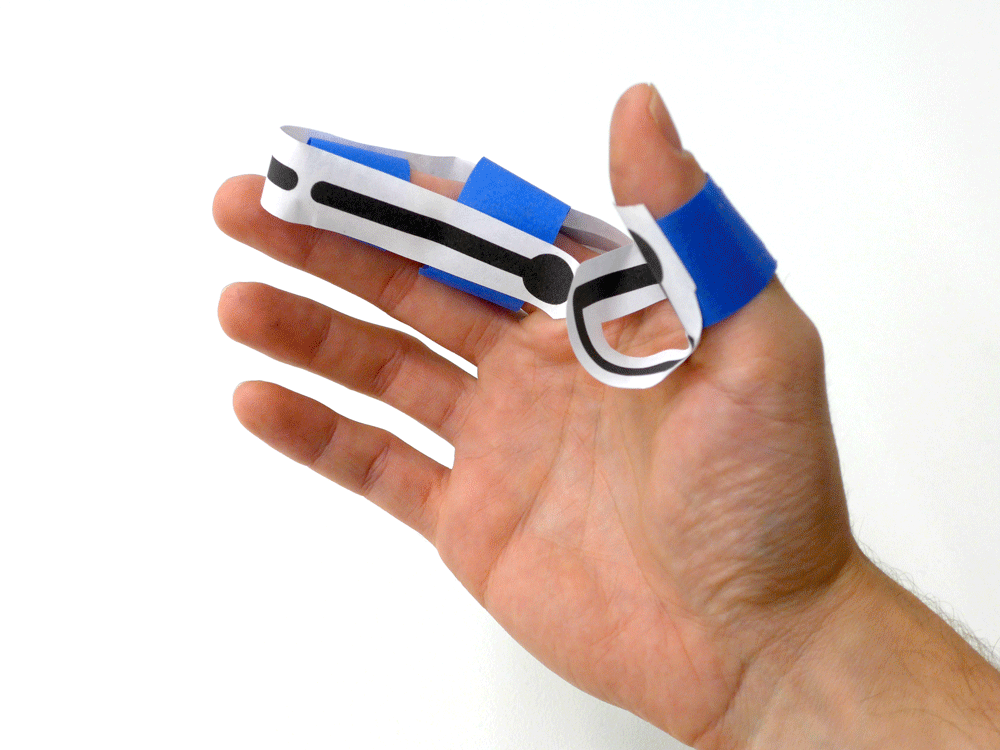
Moving Alignment
Body measurement is rarely perfect. Data collection on body measurements is often invasive and judgmental due to the technology or necessary personnel performing the measurement. As users force themselves to fit the categories pre-defined for them, such as clothing sizes or crutch settings, users may feel ignored or oppressed.
The Moving Alignment project presents a physical and visual data capture alternative that is body affirming and minimally invasive. The system’s data visualizations support user interaction and exploration with their personal data which can bring a new language for data interpretation.
This project aspires to help people feel comfortable in their own skin.
Context
Our bodies are in a constant state of change: growing, aging, and susceptible to being hurt by our environment. However, the current ways of collecting and visualizing self-tracking data do not take this into account. Users are shown snapshots of their data in fitness and mobility apps without the consideration of how their bodies have changed and have limited interaction with their data to explore how they have changed across time. This becomes more critical for vulnerable populations facing such as people experiencing body dysmorphia, people with amputations, and transgender individuals undergoing hormone treatment.
This project is a new way of collecting data that takes the body’s dynamic context into account, and enables interaction with bodily image and movement data in a more intimate and meaningful way.
Solution
The product is comprised of a data gathering process that employs wearable devices for data collection and computer vision, as well as an application for interactive data visualizations. For the data collection process, there are two approaches: soft and flexible electronics incorporated in a plastic-embedded textile, and video capturing pose detection to reflect our bodies virtually. The former unites wearable electronics with form fitting textiles to mitigate the feeling of mismatch when using a personal device. The latter relies on gesture, posture, and body position to capture key points of the body, such as joints, allowing comparisons to be made as a user’s range of motion changes.
Designing with a sensitivity to triggering images is paramount, the user can interact with their data visualization as a particle field instead of a photo-realistic image if they choose. As users grow more comfortable and confident in their body image, the product can be adjusted to measure and display different attributes of themselves.
Impact
Today, by starting the discussion around how people collect and interact with their movement data, we ask ourselves if the data collected is really used with our best interests in mind, or if it’s mainly being used to satisfy the interests of the organizations that collect it. With rising concerns on privacy and proper usage of data collected, a critical view that takes into account how our bodies, the source of data, evolve through time, and how many different types of bodies are there, has the potential to impact the way we develop future systems.
Further down the line, the project may expand the options of how data is collected for different body types, in a manner that is both respectful to the user, while acknowledging that physical changes happen throughout life. This in turn can create the opportunity to have different interactions and visualizations of body data, so that interpreting it is more intuitive and accessible to those with different degrees of data literacy, breaking down barriers on improving the understanding of our bodies. Less invasive data collection and more meaningful interactions and takeaways from it could reshape the state of self-tracking and deepen our understanding of our own body and its movements.




